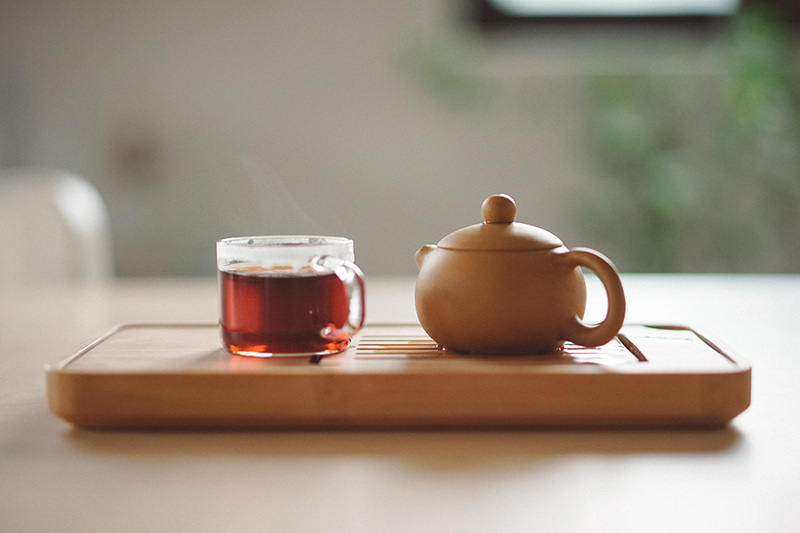Bug-bitten tea might not sound like something you would want to put on your to-try list, but you might get surprised. One of the most beautiful teas in the world owns its incredible honey-like flavor to a tiny insect – Jacobiasca formosana. Do you know which tea it is?
What is Jacobiasca formosana?
All real tea is made from a Camellia sinensis tea plant. Just like all other plants, Camellia sinensis is an attractive host to many bugs. Jacobiasca formosana is a small insect from the grasshopper family often called the tea jassid and, as the name suggests, it attacks the tea plant. In most cases, this small insect is harmful, but it can also influence the flavor of tea.
It’s not only the farmers that try to protect their tea plants using organic or non-organic pesticides. Tea plant, although we rarely think about it, has its own defensive mechanisms and ways of reacting to stress caused by insect attacks too. It does so by creating different volatile compounds or increasing levels of catechins or theanine. In fact, even caffeine in tea leaves is one of the defense systems against pests [1]. Studies showed that different insects will cause different reactions.
For example, a moth called tea geometrid will increase theanine content, while the tea jassid will change its volatile compounds [2]. And that’s exactly what changes the flavor. Different compounds in tea will all have an influence on flavor. For example, catechins are bitter and L-theanine has a savory taste. In a tea jassid bitten leaves, compounds responsible for the flavor hotrienol and 2,6-dimethyl-3.7-octadiene-2,6-diol[3].
The best bug-bitten teas
Although not all tea plants and not all tea types will taste great when attacked by this insect, some teas are an exception. Oriental Beauty or Dongfang Meiren tea is a special type of oolong tea that owns its incredible honey like flavor with ripe fruit note to a tea jassid. Oriental Beauty is a tea with small twisted leaves, produced only in Taiwan. Before plucking, tea leaves have been infected by tea jassids, creating small ruptures on the leaves. Those small bites do not create large visible holes like in leaves bitten by other insects, but are enough for the tea plant to start a chemical change in the tea leaf. The result? Incredible honey like flavor that’s preserved and enhanced during processing [4]. The same result would simply not be possible with unbitten leaves. Oriental Beauty may be the most famous and well-prized bug bitten Taiwanese tea, but it’s not the only one. Other types of teas with honey flavor like Gui Fei or Hong Shui are bug bitten as well.
Tea jassid hops even further
Although most types of tea plants and tea processing would not taste great after being bitten by bugs, the story of tea jassid doesn’t end in Taiwan. In Darjeeling, a small tea jassid called Empoasca flavescens is doing exactly the same to tea plants used for making Darjeeling tea. You know that delicious muscatel, slightly honey-like, slightly spicy flavor of a premium Darjeeling tea? It’s caused by not only the tea jassid but thrips too [5], which intensify their attack before the second flush. And it’s exactly the second flush Darjeeling that’s famous for its muscatel and fruity flavor with floral notes.

Photo by Manki Kim
Although Oriental Beauty is an oolong tea, and Darjeeling is processed as black, both of these teas look quite similar. They have small dark brown-greenish beautiful, twisted leaves with a lot of white buds. Both of them are worldwide famous for its intense flavor. While the Darjeeling is the champagne of black teas, Oriental Beauty is the champagne of oolongs – and they both deserve the flattering title.
Have you tried Oriental Beauty yet? Share your impressions in comments.
Sources:
[1] https://imperialbiosciencereview.com/2020/12/12/stimulating-findings-on-the-role-of-caffeine-in-plants/
[2] https://www.frontiersin.org/articles/10.3389/fpls.2019.01705/full
[3] https://kaken.nii.ac.jp/grant/KAKENHI-PROJECT-15405023/
[4] https://www.researchgate.net/publication/286063743_Identification_of_Aroma_Components_during_Processing_of_the_Famous_Formosa_Oolong_Tea_Oriental_Beauty
[5] https://www.researchgate.net/publication/221826428_Understanding_Darjeeling_tea_flavour_on_a_molecular_basis



Leave a Reply Cancel Reply